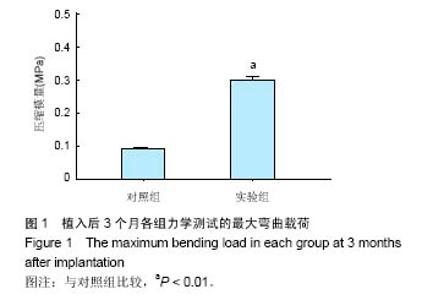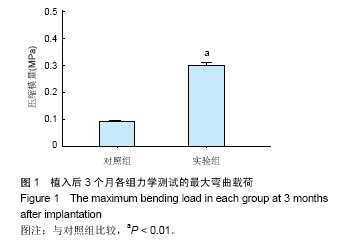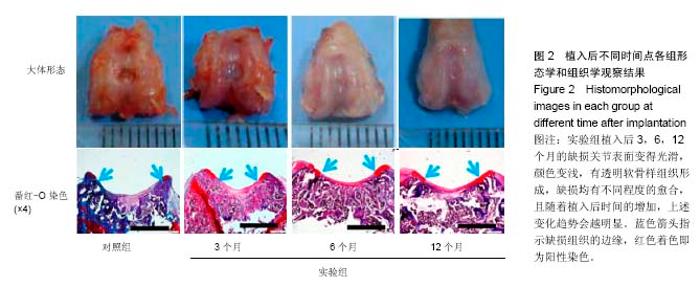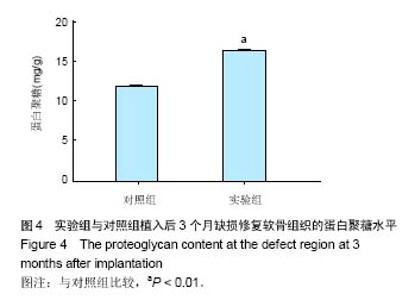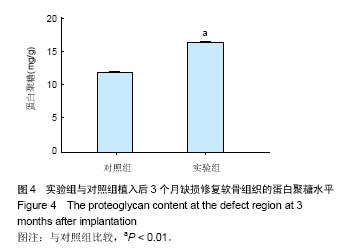| [1]秦勇,代志军,吕松岑.关节软骨损伤修复与再生的研究进展[J].医学综述,2013,19(15):2794-2801. [2]徐杨俊,赵建宁.关节软骨损伤修复的研究进展[J].医学研究生学报,2010,23(8):889-894.[3]罗飞,许建中.基因增强的骨组织工程研究进展[J].第三军医大学学报,2005,27(16):1702-1704.[4]阮征,尹庆水,张余,等.关节软骨损伤修复技术的研究与进展[J].临床与病理杂志.2015,35(3):455-461.[5]陈继营.关节软骨损伤组织工程修复的进展[J].中华关节外科杂志,2013,7(6):744-746.[6]王君,周琦,邓廉夫,等.PLGA-Fibrin杂合支架构建及与脂肪源性干细胞复合成软骨的研究[J].细胞与分子免疫学杂志,2010, 26(8):758-760.[7]郭刚,李旭,孙骏,等.自体骨髓基质干细胞辅助Mosaicplasty技术促进骨软骨缺损修复整合[J].中华创伤科杂志, 2006,8(11): 1067-1071.[8]王跃,杨志明,解慧,等.组织工程化软骨的应力-应变研究[J].生物医学工程学杂志,2001,18(2):169-172. [9]王震,梁大川,白洁玉.慢病毒介导的Sox9基因在兔骨髓间充质干细胞的过表达促进软骨损伤修复[J].中国骨伤, 2015,28(5): 433-440. [10]van den Borne MP,Raijmakers NJ,Vanlauwe J,et al. International Cartilage Repair Society (ICRS) and Oswestry macroscopic cartilage evaluation scores validated for use in Autologous Chondrocyte Implantation (ACI) and microfracture. Osteoarthritis Cartilage. 2007;15(12):1397-1402.[11]Guo X,Park H,Young S,et al.Repair of osteochondral defects with biodegradable hydrogel composites encapsulating marrow mesenchymal stem cells in a rabbit model.Acta Biomater.2010;6(1):39-47.[12]李卿,刘伟,夏万尧,等.爱茜蓝法检测组织工程化软骨及软骨细胞中蛋白聚糖的含量[J].中华实验外科杂志,2003,20(1):89.[13]代岭辉,杜宁.关节软骨损伤生物学修复的研究进展[J].中国骨伤,2009,22(9):721-724.[14]宋希元,亓建洪.骨软骨移植修复关节软骨缺损的研究进展[J].泰山医学院学报,2004,25(3):244-247.[15]吕成昱,张海宁,王英振.自体骨髓基质干细胞及可注射藻酸钙凝胶联合Mosaicplasty技术修复山羊膝关节股骨头大面积缺损[J].中国组织工程研究与临床康复,2009,13(47):9253-9256.[16]Chadli L,Cottalorda J,Delpont M,et al.Autologous osteochondral mosaicplasty in osteochondritis dissecans of the patella in adolescents.Int Orthop.2017;41(1):197-202[17]Erol MF,Karakoyun O.A new point of view for mosaicplasty in the treatment of focal cartilage defects of knee joint: honeycomb pattern.Springerplus.2016;5(1):1170. [18]段小军,左镇华,杨柳.细胞移植技术修复关节软骨缺损的临床研究进展[J].中华关节外科杂志,2010,4(1):124-128.[19]古振,刘芳.脂肪干细胞在骨组织工程中的研究进展[J].组织工程与重建外科杂,2012,2(1):53-55.[20]Jin MS,Shi S,Zhang Y,et al.Icariin-mediated differentiation of mouse adipose-derived stem cells into cardiomyocytes.Mol Cell Biochem.2010;344(1-2):1-9. [21]Long JX, Zuk P,Berke GS,et al.Epithelial differentiation of adipose-derived stem cells for laryngeal tissue engineering. Laryngoscope.2010;120(1):125-131.[22]Gimble J,Guilak F.Adipose-derived adult stem cells: isolation,characterization, and differentiation potential. Cytotherapy.2003;5(5):362-369.[23]Assoian RK,Grotendorst GR,Miller DM,et al.Cellular transformation by coordinated action of three pep-tide growth factors from human platelets.Nature.1984;309(5971): 804-806.[24]Han SH,Kim YH,Park MS,et al.Histological and biomechanical properties of regenerated articular cartilage using chondrogenic bone marrow stromal cells with a PLGA scaffold in vivo.J Biomed Mater Res.2008;87(4):850-861.[25]Karageorgiou V,Kaplan D.Porosity of 3D biomaterial scaffolds and osteogenesis. Biomaterials.2005;26(27):5474-5491.[26]刘云忠,牛树茸.同种异体软骨细胞复合PLGA支架修复关节软骨缺损的免疫学观察[J].中国医疗前沿,2010,5(23):26-27.[27]Julia S,Uwe G,Roger T,et al.Controlled release of gentamicin from cacilum phosphate-poly (lactic acid-coglycolicacid) composite bone cement.Biomaterials.2006;27(9):4239-4249.[28]蒋宜伟,宋敏,史达,等.关节软骨缺损的基因治疗研究进展[J].颈腰痛杂志,2004,25(1):60-63.[29]Miyazono K,Maeda S,Imamura T.BMP receptor signaling: transcriptional targets, regulation of signals, and signaling cross-talk.Cytokine Growth Factor Rev.2005;16:251-263.[30]Rosen V.BMP2 signaling in bone development and repair. Cytokine Growth Factor Rev.2009;20(5-6):475-480.[31]孙骏,侯筱魁,匡勇,等.不同比例骨软骨镶嵌成形术联合基因增强组织工程方法治疗骨软骨缺损[J].中国骨伤, 2011,24(9): 768-744. [32]郑培惠,魏奉才,晋国营,等.腺病毒介导的骨形态发生蛋白-2基因转染脂肪间充质干细胞的实验研究[J].华西口腔医学杂志, 2006, 24(3):195-198.[33]邓敏,张楠,唐璐,等.腺病毒介导骨形态发生蛋白2基因转染诱导脂肪间充质干细胞向成骨细胞的定向分化[J].中国组织工程研究与临床康复,2009,13(1):80-83. |
